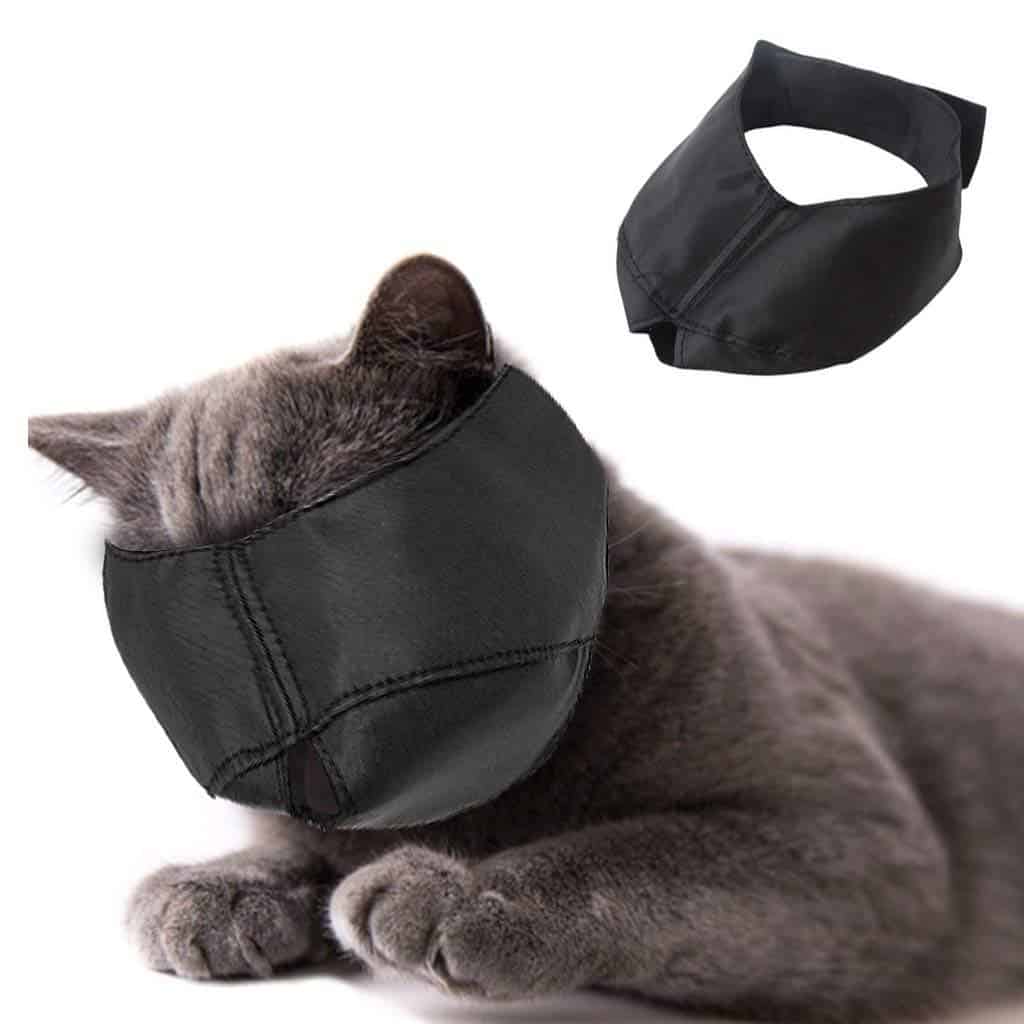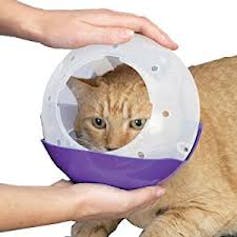
It’s not unusual to slap a muzzle on a dog if it’s being aggressive or not keen on being given an injection, but a muzzle is not part of your average cat’s wardrobe. Yet there they are online, by the dozen, in a wide range of styles and colours.
Cats are independent creatures. Although many enjoy being petted, any more handling than that and they’re likely to get their claws out, as anyone who has ever tried to take a cat to the vet will know. Cats react badly to visiting the vet and often need to be restrained when they are examined or treated. Clearly, there needs to be a way to prevent injury to the cat and the people involved and in these situations. A muzzle may be just the thing.
But not all muzzles are created equal. The one below is not one of the better ones. The idea that a cat that cannot is a less stressed cat is unlikely to be true. It may mean that it will struggle less before or during the procedure, but that may be because a terrified cat will often freeze.
It is clear from the body position of the cat in the photograph that it is not relaxed and is feeling very anxious. It is likely that it will be even more frightened the next time it has treatment.
Some cats that are very stressed or frightened will breathe through their mouth, which is not possible with this muzzle because of the tiny hole in the end. Indeed, if the muzzle becomes slightly displaced during a veterinary procedure, it may cover the nostrils and the cat won’t be able to breathe at all. A much better design is available for those times when veterinary treatment is unavoidable. Although the one below looks rather bulkier, it lets the cat see, miaow and hiss, breathe and pant.

The important question is when these devices should be used. For emergency treatment, especially of stray or feral cats that are not used to being handled, it may be unavoidable. Even for a cat that is used to lots of different situations and has been handled a lot, there may be times when it cannot cope with an invasive examination or treatment, and a muzzle may be necessary.
But for most routine procedures, it should be possible to train your cat to accept handling of all types. If you do it well and keep up the training, the cat may come to consider a visit to the vet or groomer a pleasure. Cats can even learn to tolerate claw clipping if the training is done well – although cats, even indoor cats, that are given the opportunity to express normal scratching behaviour will keep their own claws in order.
Positive reinforcement training (which some people know as “clicker training”, where a sound tells the animal that their good behaviour will shortly result in a treat) is used to train many animals, including zoo animals such as elephants and chimpanzees, to accept examination and treatment – and cats are quite easy to clicker train.
Train from early
Kittens should be handled from a very young age and introduced to as many unusual stimuli as possible, in a kind and sensitive way, before they reach maturity. Ask your vet if you can bring your kitten to the clinic so that staff can pet and feed the kitten. If your vet practice won’t allow this, then consider changing to a practice that will.
Cats can have their meals placed in the cat basket (with the door open) and be free to use it as a bed. All these precautions together should mean that there is no need to muzzle the cat for travel or routine procedures.
My other concern about cat muzzles is that they may become the default position for some people whose cats have problems in the home, either with biting or with calling, when a queen is in season, for example. Muzzles are not under veterinary control – anyone can design, sell, buy and use them. And if misused, they have the potential to cause considerable suffering.
Jan Hoole, Lecturer in Biology, Keele University
This article is republished from The Conversation under a Creative Commons license. Read the original article.
![]()






